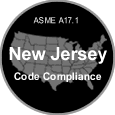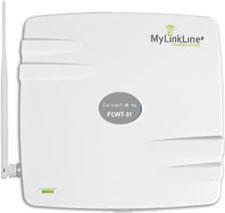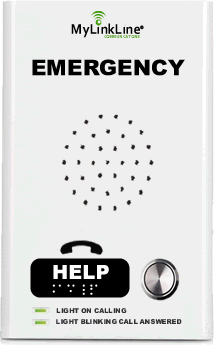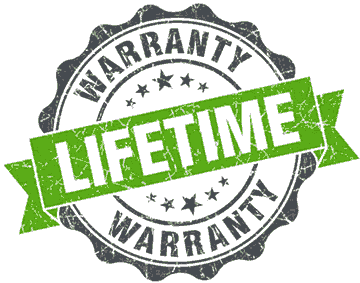
New Jersey Elevator Code 2024
Regulations & Standards
Find the latest information on New Jersey Elevator Code, laws, and safety standards. Our directories are updated monthly and include website links to help you quickly find the elevator codes and regulations for the state of New Jersey (NJ)
New Jersey elevator codes impose a responsibility on building owners and property managers to adhere to specific requirements within elevators, ensuring the safety of all occupants. Failure to comply with these codes can result in penalties and potential legal action. While the particulars of the New Jersey elevator code may differ at the state and local levels, three primary codes govern elevator safety: the American Society of Mechanical Engineers (ASME), the International Building Code (IBC), and the Americans with Disabilities Act (ADA).
ADA
The Americans with Disabilities Act (ADA) mandates unrestricted and equal access to services for individuals with disabilities.
IBC
The International Building Code (IBC) establishes precautions against hazards associated with constructed environments.
ASME
The American Society of Mechanical Engineers (ASME) plays a pivotal role in the development of codes and standards.
The State of New Jersey (NJ) currently operates under the 2016 ASME A17.1 and CSA B-44 Code
New Jersey Elevator Code Authority
The Elevator Safety unit registers all elevator devices in the State of New Jersey. Elevator devices consist of elevators (hydraulic, traction, winding drum, roped hydraulic, rack & pinion, and limited use limited access), escalators, moving walks, dumbwaiters, wheelchair lifts, chair lifts and man lifts.
The elevator subcode is regulated under the Uniform Construction Code in Subchapter 12.
There are three choices a NJ municipality may make regarding the jurisdiction of the elevator subcode in its town. It may give jurisdiction to the State, it may hire its own local Subcode Official, or it may subcontract to a third party agency.
If the State has jurisdiction in a town, the New Jersey elevator code authority / Elevator Safety unit coordinates inspections between the owner, elevator company, and the State. The unit conducts all cyclical and acceptance (inspections under permit) inspections. Owners are billed for inspections directly by the State.
In all three circumstances, Municipal Construction Officials are expected to periodically review the list of registered elevator devices in their municipalities and bring any necessary changes to the Elevator Safety unit’s attention.
If the State has jurisdiction in a town, this unit also coordinates the Elevator Subcode portion of Plan Review and Permitting with the municipality and the applicant/owner. The unit reviews building plans containing elevator devices (for a partial release) at the municipality’s office. All elevator (layouts) plans are reviewed (for a final release) at the State office, owners/applicants are billed and releases are completed.
The local Construction Official is notified of the elevator release and permit documentation is coordinated between the required parties.
Please note, only PAPER plans (layouts) are reviewed at this time by the Elevator Safety Unit.
Technical assistance is given to all parties requesting help specific to the Elevator Subcode. Monitoring of Subcode Officials and Inspectors in municipalities and third party agencies is carried out routinely.
A penalty enforcement process is utilized where violations are not abated timely. (excerpt from New Jersey Elevator Code Authority website)

New Jersey Department of Community Affairs (DCA)
Elevator Cellular Phone Lines
How to eliminate the cost of traditional elevator phone lines and save 35% or more. Our cellular elevator phone lines conform to ASME, ADA, and IBC codes, encompassing all requirements of the New Jersey elevator code.

New Jersey also follows IBC 2018, which includes additional requirements for new elevator installations.
If your elevator travels over 60 feet. A two-way communication system will be installed in the elevator that provides both visible text and audible modes per code requirements. If you’re modernizing the elevator it’s advisable to consult your local New Jersey elevator code authority for guidance on the applicable regulations.
- Two-way message display in the elevator cab for hearing and/or speech impaired
A method for authorized personnel to access video footage of passengers from any location within the cabin - A mechanism triggered by emergency personnel to modify the cabin message, signaling that assistance has arrived on-site
Please be advised that we are committed to consistently delivering accurate and current adoption information. We diligently update our records as New Jersey elevator code information becomes available.

Emergency Elevator Phones
MyLinkLine will only install elevator telephones that meet code requirements. We also comply with ADA, ASME, ANSI and IBC codes in addition to all State and Local requirements if applicable. Volume pricing available.

Elevator Phone Monitoring Service
Our dispatch center has been delivering professional service for over twenty years. Our staff has extensive technical and interpersonal training to assist in emergency and non-emergency situations.

Lifetime Product Warranty
If any part of your elevator telephone(s) or elevator cellular landline fails at any time during your lifetime due to a defect in material or workmanship, we will repair or, at our option, replace the defective device at our cost***
New Jersey Elevator Code
Elevator Phone Requirements A17.1
- Two-way communication between elevator and authorized personnel
- On-site communications if over 60 ft of travel
- Communication between the elevator if elevator has remote machine room
- Answer by live authorized personnel – no automated answering
- Communication capability for onsite emergency personnel
- On-site monitoring if staffed 24/7 by authorized personnel
- Location identification on demand to authorized personnel
- Location identification without voice communication
- Hands-free devices only and telephone handsets are not allowed
- Phone automatlly answers when calling into elevator
- Automatic redirect if no answer onsite
- Monitoring the status of local telephone lines and issuing local alerts
